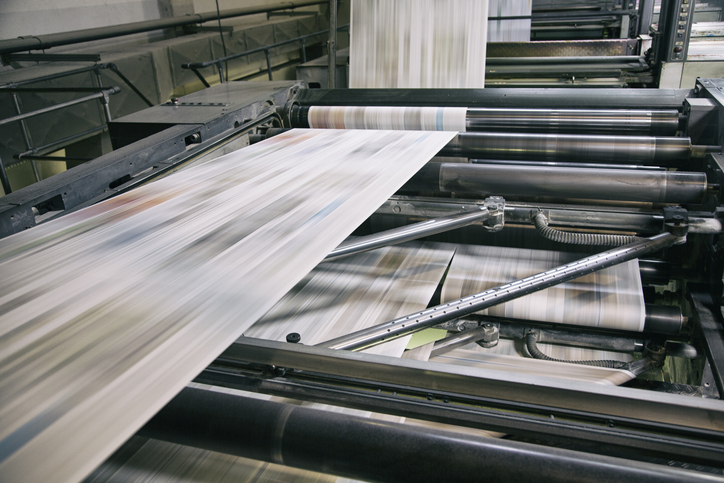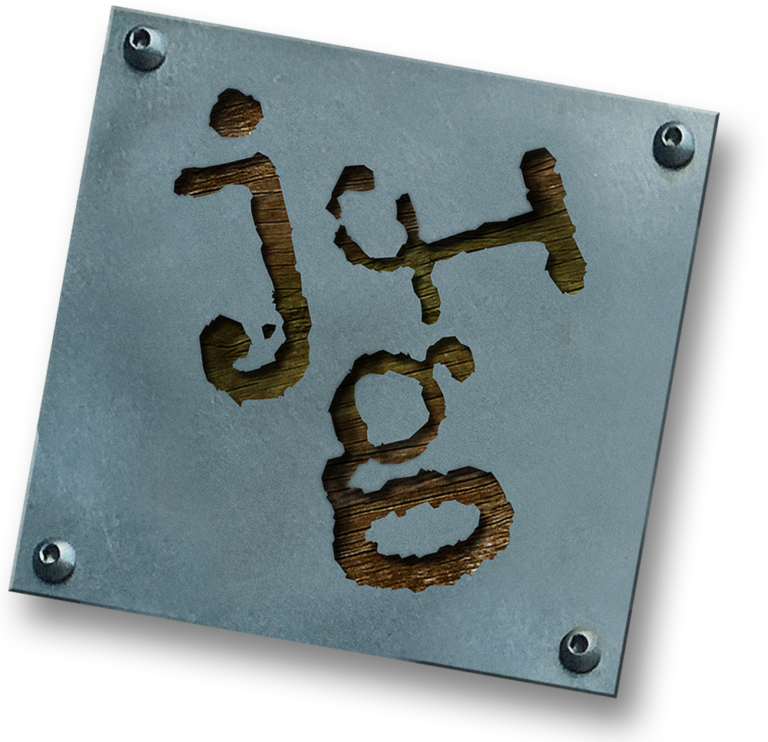Online advertising is becoming more and more relevant to a properly functioning marketing strategy. With the myriad digital platforms increasingly encouraging interactive formats and dynamic graphics, many wonder if there’s still a role for print ads in today’s marketing landscape.
The truth is that when properly executed, print ads can still be an extremely effective medium for marketers. Print offers access to specific markets, such as certain industry publications or regional news outlets that cannot otherwise be effectively reached. It also tends to skew to an older demographic, meaning that if your product or service is meant to appeal to an older age demographic, print may still be one of your most effective options. So, what’s the best way to use print with digital? Here are a few tips and tricks to get the most out of your print ads in an increasingly digital industry.
Isn’t Print Dead?
While you may have heard that print is dead, reports of its death are greatly exaggerated – or more aptly, misquoted, as is true of that old adage, itself attributable to the wordsmith Mark Twain (or Samuel Clemens, if you prefer), who actually wrote “The report of my death was an exaggeration.” Historical context aside, while the newspaper business has seen better days and is evolving to reach a more digital audience, there are still opportunities in print media that online counterparts cannot offer.
 For example, many print publications have earned a strong reputation and high level of consumer trust. This authority, in turn, translates to a higher opinion of the content in print and enhances the customer experience. According to Relevance, consumers tend to trust ads in print about 34 percent more than ads found on search engines when making decisions regarding conversions, including when it’s time to make a purchase. This is also true for mailed print ads, with direct-mail ads reported to be 37 percent more likely to create a conversion than email marketing – an attractive statistic when measuring your return on investment.
For example, many print publications have earned a strong reputation and high level of consumer trust. This authority, in turn, translates to a higher opinion of the content in print and enhances the customer experience. According to Relevance, consumers tend to trust ads in print about 34 percent more than ads found on search engines when making decisions regarding conversions, including when it’s time to make a purchase. This is also true for mailed print ads, with direct-mail ads reported to be 37 percent more likely to create a conversion than email marketing – an attractive statistic when measuring your return on investment.
Speaking of ROI, print may seem like a second-rate choice when trying to maximize engagements and conversions. However, if you think about it practically in terms of how people interact with different forms of media, it isn’t so set in stone. The average person sees anywhere from hundreds to thousands of digital ads every day on their phone or computer. These ads appear briefly in a search result or online article – there for an instant and gone in another.
An interaction with a print ad is something else entirely. Sure, the reader may not instantly gravitate right to your ad, but the publication it’s in will probably make rounds through their home or office for a few weeks and may get flipped through multiple times by multiple people, increasing your likelihood of being remembered. Don’t forget that many publications may be placed in a waiting room, lobby or even salons, giving you a higher number of potential readers per copy of the publication and expanding the reach of your ads even further.
Differentiate Your Differences
The first question you should be asking yourself when creating a print ad – or any ad for that matter – is why the audience should care about what you have to say. After all, whatever it is you’re selling, you’re selling something. So, what’s so special about your thing that makes you the right choice for your consumer?
This question has many different answers, and they depend greatly on a number of variables like what industry you’re in, what your brand stands for, and the voice you want to project. One way to help prioritize your values is to ask yourself why you care. The reasons you love your business and the work you do is often a good reason to make someone else care.
Another important way to attract attention is to showcase the value you can provide the consumer personally. As WordStream notes, use your ad placement to show the reader how you will solve a problem they’re experiencing, connect with them emotionally or make them afraid to miss out on something. In any of these cases, you’re focusing on providing a benefit – a solution to a problem, perhaps one the reader didn’t know they had. This positions you as a product or service that can improve their life and that’s something that everyone wants.
Design Is Always Important
Like most areas within the marketing field, print ads will always have a place at the table so long as they have great design. That doesn’t have to mean cluttered and gaudy – instead, clarity is key. And while nuance and detail may play an important role in the narrative you’re creating, if your imagery is unclear, your messaging runs the risk of being vague to the reader as well.
Yes, it may be tempting to try to pack as much information as possible into your ad space – you paid for it, after all – but as HubSpot suggests, it’s best to keep it simple. When it comes to messaging, less is definitely more. Use relevant headlines that speak to your intended audience, and try to gravitate towards striking, easily digestible imagery. Enfocus says utilizing negative space, experimenting with color psychology, and not being afraid to move off the page – if your idea allows it – are all great ways to help you stand out. Simple concepts don’t have to be bound by simple execution.
Give Your Audience Something to Do
Once you’ve grabbed someone’s attention, it would be a shame to waste it. That’s where calls to action come in, providing the audience with a next step to follow to stay engaged with your brand.
 Typical calls to action can vary, and may include websites, phone numbers or company location information, notes Brandwatch. However, these are just a few examples of CTAs, and the sky is really the limit as far as providing points of interaction between your brand and potential customer base. The important part to remember is that these engagement strategies give your audience a way to interact with the ad they’ve just read through another medium.
Typical calls to action can vary, and may include websites, phone numbers or company location information, notes Brandwatch. However, these are just a few examples of CTAs, and the sky is really the limit as far as providing points of interaction between your brand and potential customer base. The important part to remember is that these engagement strategies give your audience a way to interact with the ad they’ve just read through another medium.
For example, if someone was to read your print ad and love it, what should they do next? If you don’t provide a call to action, they would more than likely just move on with their day. But if you instead direct them to a landing page on your website to see your product in action or tell them to call a phone number to schedule a review for your service offering, there is a much better chance that your ad can lead to a real conversation – and a conversion.
Where You Advertise Matters
One of the most important factors to consider when choosing where to place your ad is demographics of your audience. Characteristics about your potential customers such as age, gender and income – and of course, geography – may all play a role in determining the best publication for your ad.
Although they are not absolute rules, these characteristics can be used to make certain informed inferences about what a particular group of people may like or dislike. This is crucial when determining where to put your ad because not everybody cares about the same things. For example, Car and Driver is a popular magazine that many middle-aged men may read, but that audience probably doesn’t care much about an illuminated phone case that provides the perfect soft lighting for selfies. However, many 22-year-old women would definitely be interested – they just aren’t in the audience for Car and Driver, so a different publication would be a better choice.
Not All Ad Space Is Equal
Once you’ve decided on which publication will carry your ad, you have yet another important decision to make – what type of ad size or ad space to choose. When considering this, there are a few factors that come into play.
Like it or not, most of the time this selection will be driven by your budget. Of course, a premium feature position on the back cover or a two-page centerfold spread will be more noticeable, attract more attention and encourage conversion, but what if that’s a little outside your price range? Other page options still provide great canvasses for effective, memorable advertisements, and it’s with these less-popular spots that will allow your creative department to really shine, giving them the opportunity to play with space.
For example, with a one-third page vertical spot, a designer can use the length of the space as a design element for the ad, just as they could do the same with the width on a one-third page horizontal. Regardless of what else is printed on that page – whether your ad is placed with a story or alongside other ads – your team has the opportunity to really own the space you do have.
In fact, it’s in those ad positions that don’t take up the full page where a simplistic and effective design truly matters. Since you aren’t the only idea on the page, you need to draw attention to your placement while simultaneously offering the reader a reprieve from what will probably be a lot of other loud content.
Frequency and Repetition
Another big part of an effective ad campaign is as true online as it is in print – one ad alone is usually not enough to be remembered. It takes repetition and frequency to really make an impact with your audience.
While there are exceptions to every rule, as a general guideline you should not assume that a single print advertisement will be enough to influence consumers to recall, purchase or even become aware of your product or service. This is what we in marketing call effective frequency, which basically means that it takes multiple exposures to a marketing message for an audience to really have it be impactful. In popular convention, this means a reader would need to see your ad at least three times before anything begins to stick, so make sure when planning a campaign that you budget for multiple runs in your target publication.
Print, Digital, Designs – We Do It All
At this point, you may be thinking that this is a bit overwhelming – and that’s fine. After all, there is a lot that goes into developing an effective marketing strategy and creating, placing and maintaining an ad campaign. Luckily, the team at JFG does this on a daily basis, so let us help you make your ads more successful.
At JFG, we provide a wide range of services that help you make the most of your advertising dollars. We take pride in working closely with each client individually to understand their goals and achieve them. We know the importance of making your budget count, and that’s why we work to put together a campaign that is effective and shows you a return on your investment. When you succeed, we succeed – and vice versa – so let us show you what we can do.
We would love to work with you. Let’s discuss your needs and goals, and see what we can do together. Call us today at 716.433.7688, and don’t forget to follow us on Facebook, Twitter, Instagram or LinkedIn for even more marketing news and updates.


